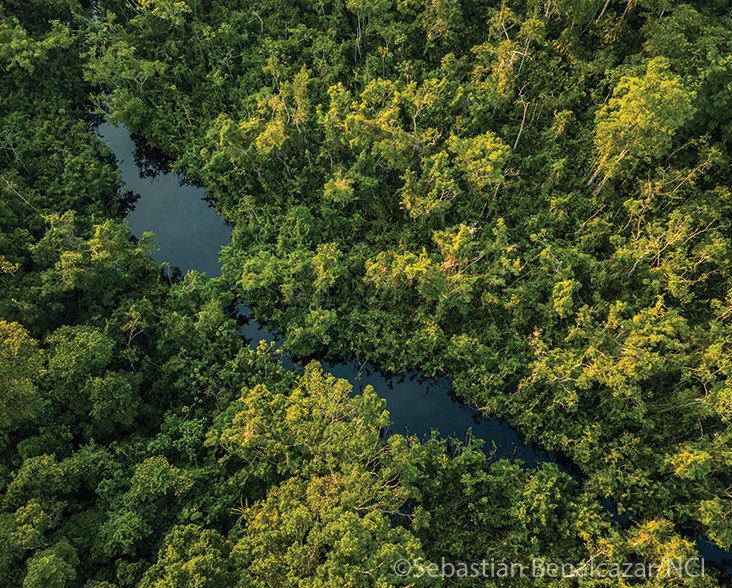White-bellied Spider Monkey
Species Data
Class: Mammalia
Order: Primates
Family: Atelidae
Scientific Name: Ateles belzebuth
IUCN Red List status: Endangered
Description
The White-bellied or Long-haired Spider Monkey has a head and body length of 46-50 cm and a tail 74-81 cm long. Males are longer, but females have a proportionately longer tail. Males weigh around 8.3 kg, with the lighter females averaging 7.9 kg. The slender arms and legs are longer than the body, and the muscular tail is prehensile.
Fur colour is variable across their range. Both sexes are blackish to dark or light brown above, with yellowish-white on the underparts and inner surface of the limbs, backs of the thighs and underside of the tail. The furless face is dark, with many individuals having a white or yellowish-brown triangular patch on the forehead. Juveniles are dark with a reddish face.
Behaviour
This social species lives high in the forest canopy in troops of 15-55 individuals. They have a home range between 150-400 ha (371-988 acres) and move through the forest through brachiation—using their arms to swing from tree to tree limb. Subgroups use loud calls to communicate with other subgroups, information such as their location as well as to proclaim their territory, with males calling more frequently than females.
This species spends about 22% of its time foraging, mainly in the upper forest canopy and emergent trees. Around 80% of their diet consists of fruits, and this species is an important seed disperser for hundreds of plant species. They also supplement their diet with young leaves, flowers, seeds, floral buds, pseudobulbs, aerial roots, decaying wood, honey and small insects.
White-bellied Spider Monkeys are polygynandrous. Troops consist of three times as many females as males, and females initiate mating with several males. Females give birth to a single offspring typically between May and December, after a gestation period of 210-225 days. Young are weaned at 12-15 months and become independent after 17 months.
Both males and females become sexually mature between 4-5.5 years old, with females breeding every 2-4 years. Their lifespan in the wild is unknown, but they live between 30-40 years in captivity.


Habitat
The White-bellied Spider Monkey occurs in three discontinuous areas in the north-western Amazon basin, distributed across parts of Brazil, Colombia, Ecuador, Peru and Venezuela. They are generally found in the lowlands below 1,000 m asl but have been recorded up to 1,300 m in Colombia, inhabiting the canopy of high primary forest, typically terra firme clay soil forests, while also visiting flooded várzea and riverine forests.
Threats and Conservation
Although remaining common within protected areas, the White-bellied Spider Monkey population is declining due to habitat loss through deforestation as well as hunting for food and the local pet trade in Brazil, Colombia, Ecuador, and Peru. The population is expected to decrease by at least 50% between 2005-2050, and therefore this species is listed as Endangered on the IUCN Red List.
Development, timber extraction and agriculture are all drivers behind the declining population throughout their range. In Colombia, this species’ habitat is cleared for coca plantations, while in Brazil, the expansion of cattle ranching and soy production and highway construction causes destruction of their habitat. In Ecuador their habitat faces the highest deforestation rates in the country, along with several mining concessions.
This species’ large size makes them a preferred target for hunters, and where hunted, their population density decreases rapidly. In areas of Brazil where they are heavily hunted, population density has fallen by up to 50%, while in Ecuador, White-bellied Spider Monkeys are rare near human settlements due to high hunting pressure.
Creating and policing protected areas is vital to halt and reverse the decline of the White-bellied Spider Monkey population. This species is known or thought to occur in 28 protected areas in five countries throughout its range, although only one of these has been created since 2000.
